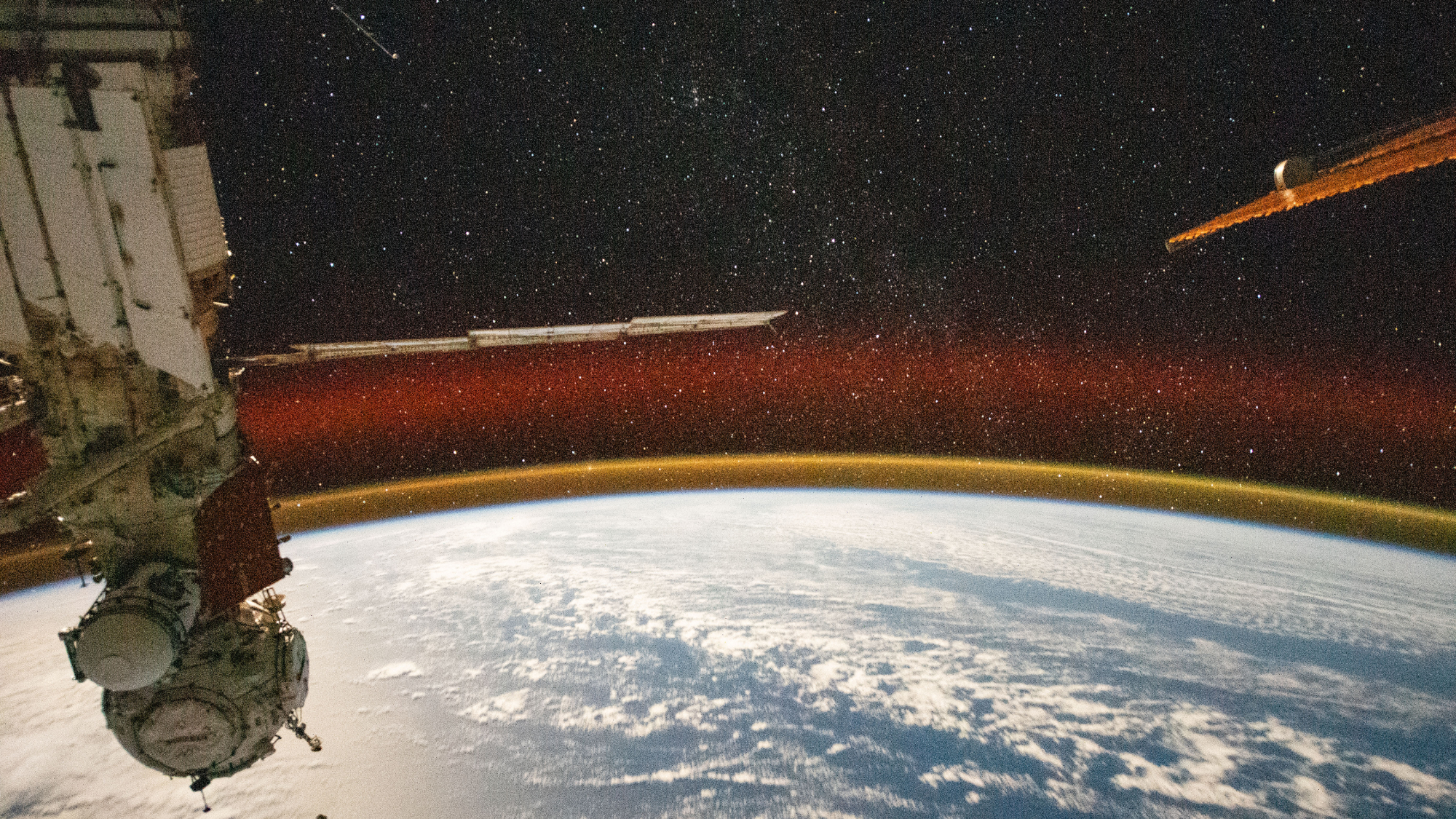See Earth's atmosphere glow gold in gorgeous photo taken from the ISS
The glow occurs when sunlight interacts with atoms and molecules in our atmosphere.

A golden glow illuminates Earth's horizon in a stunning new image from the International Space Station.
The atmospheric glow, or airglow, captured in the new photo occurs when sunlight interacts with atoms and molecules within Earth's atmosphere. The new photo, which NASA shared on Jan. 21, shows a bright golden glow arching above Earth, along with an auburn-colored band against the dark contrast of a starry sky backdrop.
The photo was taken at an altitude of 258 miles (415 kilometers) as the orbiting lab flew over the Pacific Ocean northeast of Papua New Guinea, according to a NASA image description.
Related: Earth's atmosphere: Facts about our planet's protective blanket
Airglow is the result of an interaction in Earth's upper atmosphere, whereby molecules of nitrogen, oxygen, sodium and ozone are excited by ultraviolet radiation from sunlight and, in turn, emit light as they collide with one another. This type of light show is best seen at night. So the recent photo was captured at a high exposure, allowing enough light to enter the camera to see Earth and the star-studded sky.
Traveling at a speed of 5 miles (8 kilometers) per second, the International Space Station (ISS) orbits Earth about every 90 minutes, traveling through 16 sunrises and sunsets in a 24-hour period. The space station experiences about 45 minutes of daylight and 45 minutes of darkness in each revolution.
In addition to the colorful golden auburn glow, the photo captures white wispy cloud tops above the dark blue of the Pacific Ocean. Parts of the space station itself also snuck into view, including the Prichal docking module and the Nauka multipurpose laboratory module, both of which belong to Russia's space agency Roscosmos.
Get the Space.com Newsletter
Breaking space news, the latest updates on rocket launches, skywatching events and more!
Captured on the left side of the image, Prichal is attached to Nauka, providing five available docking ports to accommodate multiple Russian spacecraft, along with fuel transfer capabilities. The Nauka module — used to conduct experiments as the primary laboratory of the ISS' Russian segment — arrived at the space station in July 2021, followed closely by Prichal in November 2021.
Join our Space Forums to keep talking space on the latest missions, night sky and more! And if you have a news tip, correction or comment, let us know at: community@space.com.

Samantha Mathewson joined Space.com as an intern in the summer of 2016. She received a B.A. in Journalism and Environmental Science at the University of New Haven, in Connecticut. Previously, her work has been published in Nature World News. When not writing or reading about science, Samantha enjoys traveling to new places and taking photos! You can follow her on Twitter @Sam_Ashley13.









